Recent Publications
This article first appeared in ISAW Newsletter 17, Winter 2017.
A selection of books by ISAW faculty, research associates, and previous scholars
For a more comprehensive list of recent publications by ISAW community members, please visit: isaw.nyu.edu/news/recent-publications-december-2016.
Roger S. Bagnall, Roberta Casagrande-Kim, Akın Ersoy, and Cumhur Tanrıver, eds., Graffiti from the Basilica in the Agora of Smyrna (New York: NYU Press, 2016).
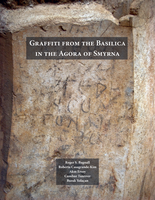 This volume breaks new ground in the publication of ancient graffiti. Abundant color photographs appear alongside Greek texts and translations in a finely produced volume available at reasonable cost. The extensive Introduction places both the texts and the illustrations of ships, gladiators, and other motifs within their Roman-period civic context. Identity, religion and gender are all addressed, meaning that this volume will be of interest to many members of ISAW’s broad intellectual community.
This volume breaks new ground in the publication of ancient graffiti. Abundant color photographs appear alongside Greek texts and translations in a finely produced volume available at reasonable cost. The extensive Introduction places both the texts and the illustrations of ships, gladiators, and other motifs within their Roman-period civic context. Identity, religion and gender are all addressed, meaning that this volume will be of interest to many members of ISAW’s broad intellectual community.
Alexander Jones, A Portable Cosmos: Revealing the Antikythera Mechanism, Scientific Wonder of the Ancient World (Oxford University Press, 2017).
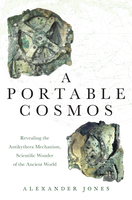 Corroded fragments of a complex bronze gearwork device were discovered in a Hellenistic shipwreck site at the island of Antikythera in 1901. A half century of intense research has securely established much of its workings and functions as an instrument displaying simulations of chronological cycles and astronomical phenomena. In A Portable Cosmos Alexander Jones recounts what we know and what we still do not know about the Mechanism, and shows that it was a sophisticated but highly characteristic product of Greek culture and science.
Corroded fragments of a complex bronze gearwork device were discovered in a Hellenistic shipwreck site at the island of Antikythera in 1901. A half century of intense research has securely established much of its workings and functions as an instrument displaying simulations of chronological cycles and astronomical phenomena. In A Portable Cosmos Alexander Jones recounts what we know and what we still do not know about the Mechanism, and shows that it was a sophisticated but highly characteristic product of Greek culture and science.
Available for purchase in the ISAW gallery store.
Daniel Potts, The Oxford Handbook of Ancient Iran, corrected, paperback edition (Oxford University Press, 2017).
 First published in 2013, the Oxford Handbook of Ancient Iran is appearing now in a corrected, paperback edition. With over 50 chapters, and more than 1000 pages of text, the volume covers the complete span of Iran’s pre-Islamic history and archaeology from the earliest Palaeolithic evidence of human occupation to the Islamic conquest.
First published in 2013, the Oxford Handbook of Ancient Iran is appearing now in a corrected, paperback edition. With over 50 chapters, and more than 1000 pages of text, the volume covers the complete span of Iran’s pre-Islamic history and archaeology from the earliest Palaeolithic evidence of human occupation to the Islamic conquest.
Available for purchase in the ISAW gallery store.
Ogden Goelet and Adela Oppenheim, eds., The Art and Culture of Ancient Egypt: Studies in Honor of Dorothea Arnold, a special issue of Bulletin of the Egyptological Seminar, Vol. 19 (2015).
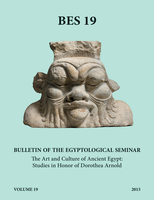 Dorothea Arnold’s career in Egyptology is distinguished by the scope of her scholarship and by her understanding of its detailed messages. She has brought her keen sense of observation and meticulous archaeological reflection to publications and exhibitions that have enriched our understanding of sculpture and relief, pottery and models, the Old Kingdom through the Roman Period. This volume published in her honor reflects her wide-ranging interests. It contains seventy articles by sixty-four Egyptologists, conservators, and scientists, who examine aspects of art history, archaeology, burial customs, language, chronology, conservation, and museum studies covering all periods of ancient Egypt.
Dorothea Arnold’s career in Egyptology is distinguished by the scope of her scholarship and by her understanding of its detailed messages. She has brought her keen sense of observation and meticulous archaeological reflection to publications and exhibitions that have enriched our understanding of sculpture and relief, pottery and models, the Old Kingdom through the Roman Period. This volume published in her honor reflects her wide-ranging interests. It contains seventy articles by sixty-four Egyptologists, conservators, and scientists, who examine aspects of art history, archaeology, burial customs, language, chronology, conservation, and museum studies covering all periods of ancient Egypt.
Sabine R. Huebner and Geoff Nathan, eds., Mediterranean Families in Antiquity: Households, Extended Families, and Domestic Space (Chichester, West Sussex: John Wiley & Sons, Inc., 2016).
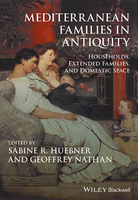 This comprehensive study of families in the Mediterranean world spans the Bronze Age through Late Antiquity, and looks at families and households in various ancient societies inhabiting the regions around the Mediterranean Sea. Recent studies have stressed the region’s variety and variability, while nonetheless trying to find some unifying concepts that distinguish the Mediterranean from other regions. This volume explores for the first time whether similar topographic conditions and the continuous exchange of ideas have also produced similar concepts of the family, of marriage, childcare, or intergenerational solidarity uniting the societies inhabiting its shores.
This comprehensive study of families in the Mediterranean world spans the Bronze Age through Late Antiquity, and looks at families and households in various ancient societies inhabiting the regions around the Mediterranean Sea. Recent studies have stressed the region’s variety and variability, while nonetheless trying to find some unifying concepts that distinguish the Mediterranean from other regions. This volume explores for the first time whether similar topographic conditions and the continuous exchange of ideas have also produced similar concepts of the family, of marriage, childcare, or intergenerational solidarity uniting the societies inhabiting its shores.
Francesca Rochberg, Before Nature: Cuneiform Knowledge and the History of Science (Chicago: The University of Chicago Press, 2016).
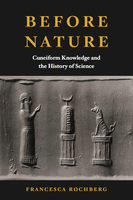 For two millennia, before the concept of nature took shape in European and Islamic natural philosophy and science, a learned cuneiform world engaged in activities manifestly kindred with science in the ways it observed and understood phenomena. Before Nature investigates evidence for observing and interpreting, theorizing and calculating what we think of as natural phenomena in ancient Assyrian and Babylonian scholarship, and considers the place of cuneiform knowledge in relation to the history of science without recourse to later ideas of nature.
For two millennia, before the concept of nature took shape in European and Islamic natural philosophy and science, a learned cuneiform world engaged in activities manifestly kindred with science in the ways it observed and understood phenomena. Before Nature investigates evidence for observing and interpreting, theorizing and calculating what we think of as natural phenomena in ancient Assyrian and Babylonian scholarship, and considers the place of cuneiform knowledge in relation to the history of science without recourse to later ideas of nature.